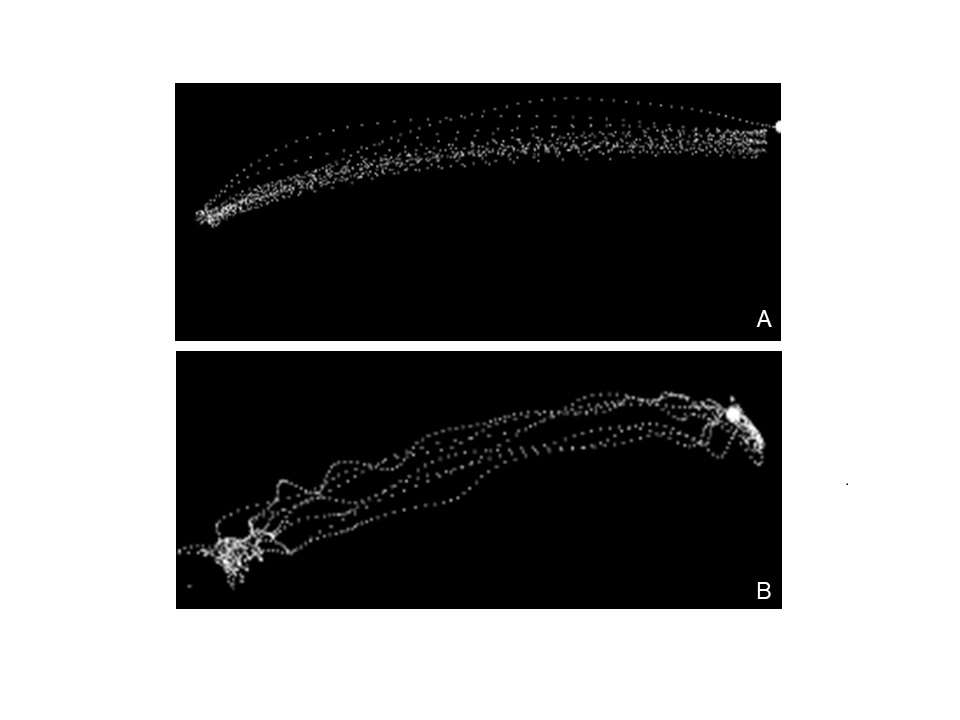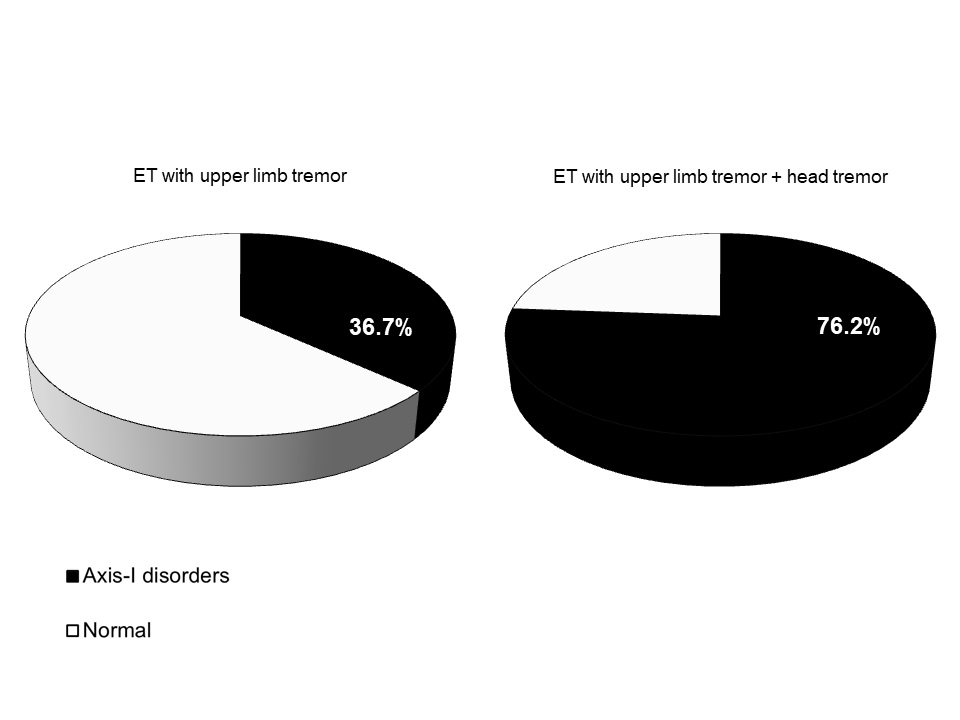Session Information
Date: Tuesday, September 24, 2019
Session Title: Tremor
Session Time: 1:45pm-3:15pm
Location: Les Muses Terrace, Level 3
Objective: We collected demographic, clinical and kinematic data from a relatively large sample of essential tremor (ET) patients and we investigated how motor and non-motor symptoms are affected by historical features or tremor characteristics. A better understanding of these issues may provide further insight into the heterogeneity of ET and allow specific disease-related features to be distinguished from coincidental findings or age-related epiphenomena
Background: Essential tremor (ET) is a heterogeneous condition [1]. In addition to having postural and kinetic tremor of the upper limbs, some patients with ET may have non-motor symptoms, like cognitive and psychiatric disorders [2]. It is unclear, however, whether motor and non-motor disorders in ET patients are influenced by their historical (i.e. family history disease duration and age at onset) or by tremor characteristics (i.e. body distribution of tremor) [3].
Method: We enrolled 70 patients with a diagnosis of ET. Tremor severity was assessed by means of clinical rating scales. Patients also underwent a kinematic recordings of postural and kinetic tremor based on an optoelectronic system. A number of neuropsychological tests were also administered. Finally, we adopted the structured interviews for DSM-IV, SCID-I and SCID-II to investigate psychiatric and personality disorders.
Results: Longer disease duration (≥ 10 years) was associated with more severe tremor, as demonstrated by the clinical rating and altered trajectories during arm movements [Figure 1]. ET patients with upper limb tremor plus head tremor exhibited more severe kinetic tremor and a higher occurrence of Axis-I psychiatric disorders than ET patients with upper limb tremor only [Figure 2]. Motor, cognitive and psychiatric features did not differ significantly with respect to family history (i.e. familial vs. sporadic ET cases) or age at tremor onset.
Conclusion: These findings support the hypothesis that disease duration and tremor distribution are the main determinants of ET heterogeneity, which is in keeping with the hypothesis of neurodegenerative process and cerebellum involvement in this condition.
References: [1] Bhatia KP, Bain P, Bajaj N, et al. Consensus Statement on the classification of tremors. from the task force on tremor of the International Parkinson and Movement Disorder Society: IPMDS Task Force on Tremor Consensus Statement. Movement Disorders. 2018;33:75–87. [2] Espay AJ, Lang AE, Erro R, et al. Essential pitfalls in “essential” tremor. Mov Disord. 2017;32:325–331. [3] Louis ED. Essential tremor: “Plus” or “Minus”. Perhaps now is the time to adopt the term “the essential tremors”. Parkinsonism Relat Disord. 2018 Nov;56:111-112.
To cite this abstract in AMA style:
G. Paparella, M. Bologna, I. Berardelli, G. Ferrazzano, L. Angelini, P. Giustini, D. Alunni-Fegatelli, A. Berardelli. Insight into the heterogeneity of essential tremor [abstract]. Mov Disord. 2019; 34 (suppl 2). https://www.mdsabstracts.org/abstract/insight-into-the-heterogeneity-of-essential-tremor/. Accessed December 8, 2025.« Back to 2019 International Congress
MDS Abstracts - https://www.mdsabstracts.org/abstract/insight-into-the-heterogeneity-of-essential-tremor/


